BILL'S
[Somewhat] WEEKLY COLUMN/BLOG PAGE
BILL’S BACK IN TIME
By Bill Ladabouche
The Best Performances in a
Forgotten League
Usually, with a title like this in a sports
environment, the writer is talking about something like Herschel Walker in the
United States Football League, Monte Irvin in the Negro Leagues, or maybe Dr. J
in the American Basketball Association. However, this particular topic centers
around the seven - year lifetime of the All Star Stock Car Racing League.
The All Star League, as we familiarly call it,
was a wonderful idea that came from two New York City area sports promoters,
Larry Mendelsohn [famous in the country for his demo derbies on the Wild World
of Sports] and Lou Figari, who worked with a number of sports teams and
ventures.
With the idea being
that top drivers from both paved and dirt track environments would compete
against one another on tracks of both surfaces and of various lengths, the most
versatile and persistent drivers would persevere. The idea was timely and very
exciting. Figari, Mendelsohn, along with promoter Jerry Fried, racing manger Bob
O’Rourke, and publicity man Tim Sullivan ran the series very effectively for
seven years.
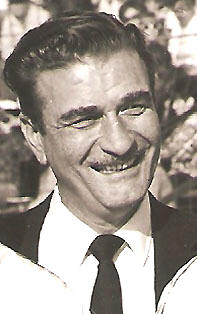
empaonline Site Photo
Jerry Fried appeared in the
officials’ list early in the League history. Perhaps this one reason his track,
Nazareth,
stayed the course and committed so strongly to excellence, It didn’t hurt,
either, to have Cagle and Schneider.
Unfortunately, the protagonists could not foresee the
energy crisis of 1973, the premature deaths of three of the League’s prime
movers and shakers, nor the problem of having some of the League members show
much more devotion to making the mid – week shows than others. The opening,
hopeful season of 1967 saw races at all eight team venues with widely varying
rates of race attendance among the teams. Pennsylvania’s Tiopet Racing Oil and
McHal [makers of the signature All Star League helmets] offered strong support.
81 different drivers participated in at least one race.
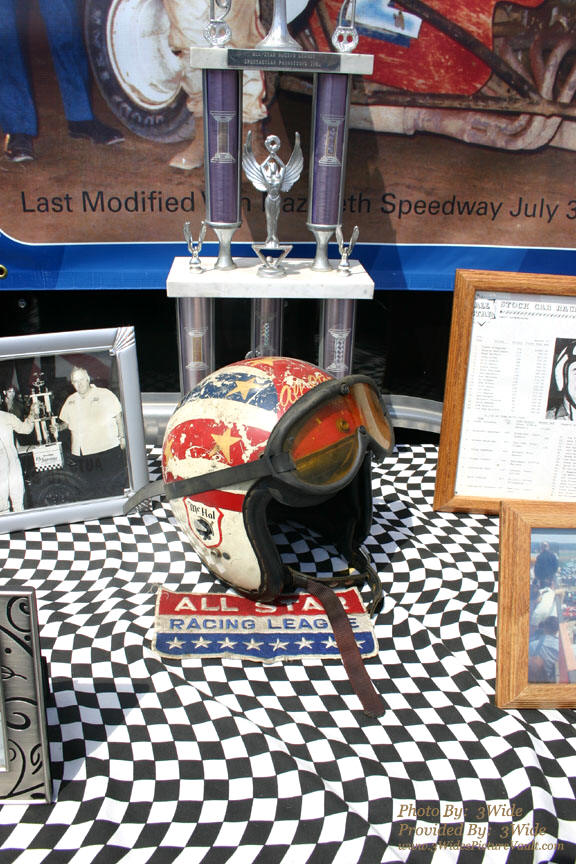
Flemington History Site
Frankie Schneider’s League
Helmet shows evidence he wore it long after he wasn’t in the League. The old
silk screen process
McHal would have used meant the graphics would wear off. Below – Gil Hearne,
[father of Beett] an original League member, models his McHal.
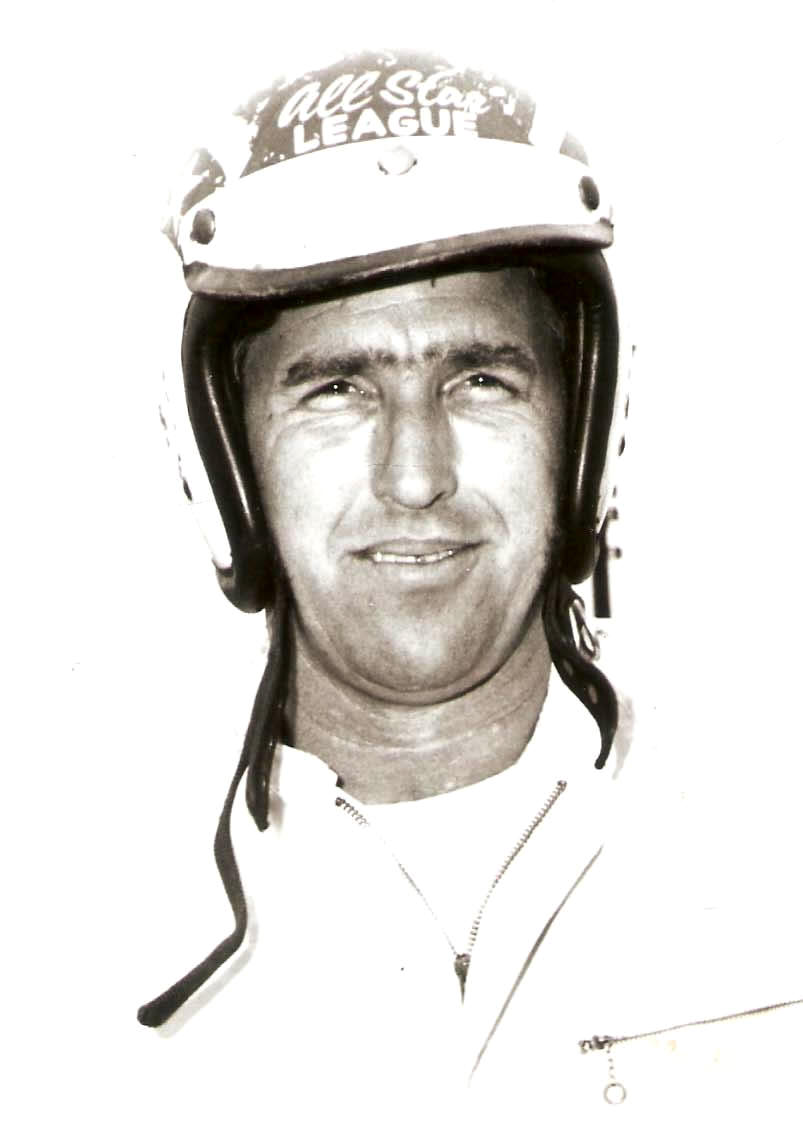
Source Unknown
After a season or
two, Fried’s name disappeared from the officials’ list, and a few tracks stayed
the course while numerous others came and went. Towards the end, the League was
much larger, although the number of team drivers was not. Teams eventually pared
down to two drivers each. Also, the last seasons of the League showed a decisive
advantage towards the asphalt specialists. But, the challenge remained strong:
only Lou Lazzaro won two titles and only he and Buzzie Reutimann won on both
surfaces [once ,each]. The last season was 1973.
If I had to anoint
one driver as “Mr. All Star League”, it would have to be Buzzie Reutimann, who
belonged to the Orange County Speedway team from Middletown, NY for all seven
years. Reutimann’s average finish for the entirety of the League’s existence was
4.14, and that included 1968, when he did not appear in the top ten. For Buzzie,
who won on both surfaces and had a victory total of 7, winning the League title
in 1973 and finishing second in four different other seasons was unimaginably
difficult to do.
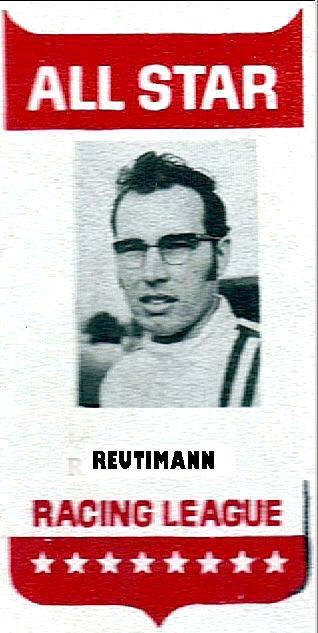
From a Program Donated by Wes Moody
Buzzie Reutimann proved to be
the best of the League crop in skill and longevity. [Below] – Ron Narducci could
also have been called the spirit of the All Star League, as well.
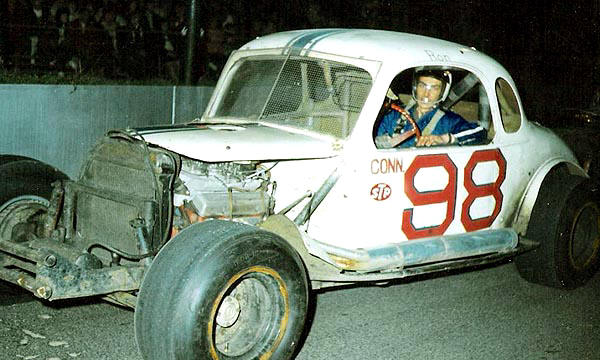
Ladabouche Collection
Reutimann’s average
is almost a full position better than that of the highly – talented and
versatile Lazzaro, who did not belong to the League in 1967. According to Gary
London, a close student of the League, Reutimann was the only driver to
participate in every All Star League race throughout the seven year life span of
the organization. What is more remarkable is that Buzzie at least started out as
a dirt track specialist but then seemed to end the seven years proficient at
both surfaces.
Lazzaro, who missed
a season, and Ron Narducci, who missed none, both averaged a little over a fifth
place finish in points for the seven – year span. Narducci was, in many ways,
the face of the All Star League, making a strong effort to support it every week
and every year. Perhaps the proudest League member was four- time NASCAR
National Sportsman Champion, Rene Charland, who wore his All Star Helmet as long
as he could.
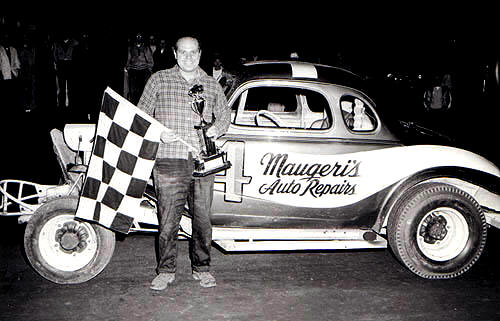
Courtesy of Bill Fifield
Lou Lazzaro was reknowned in
our region as a guy who was staunch on both surfaces.
Nazareth, Islip,
Wall, and Orange County are the only teams to see all seven years of the All
Star League. Albany – Saratoga was a loyal and successful member, but the track
missed out in the final season. There is no logical explanation for this except
that it must have been experiencing ownership or promotional changes. The track
did get sold to C.J. Richards in 1977, and became a dirt track for years.
It is very hard to judge overall team success for the
League. The points a team could earn varied widely from season to season, making
just pure average seasonal points averages ineffective as the basis for
judgment. Also, the League varied from 8 teams to as many as 12, making the use
of the average finish position inaccurate as the sole criterion. If you look at
both together, Albany – Saratoga looks the best. Dirt – oriented Nazareth, a
team that participated all seven years, had a bad 1973 season, finishing 10th;
Albany – Saratoga avoided this problem by missing 1973. Nazareth, in fifth, is
the best finisher for the seven – year teams.
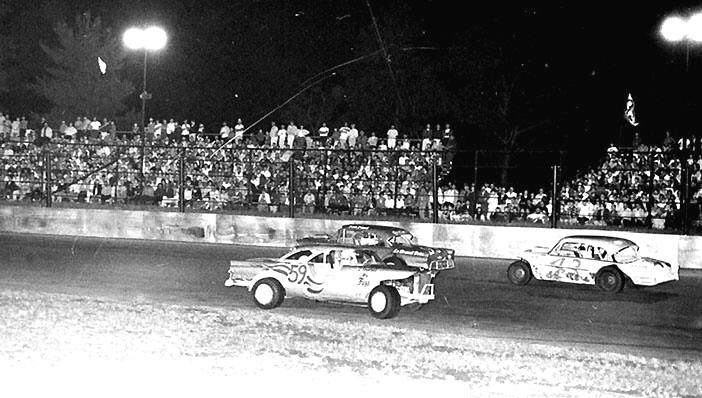
Ladabouche Collection
Albany – Saratoga Speedway, then a
paved track as shown here, could have been the best track in the League series
had it stayed
the course. Below – Orange County probably ends up deserving the Best Track in
the Series award.
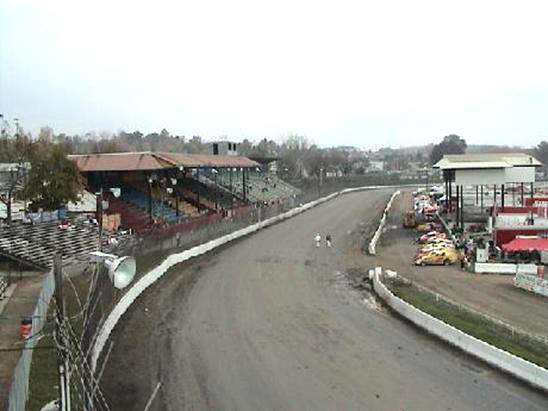
Middletown Site Photo
Orange County, a dirt team, had the best seasonal
points average while running all seven years. It also managed a sixth place
finish in the “average finish” department. This makes an argument for it being
the best team ever. Fonda, which only ran in four of the seven years, finished
light years ahead of anyone else in the “Average Finish” department, at 1.75;
that’s better than a 2nd
place average finish ! The final noteworthy fact about all of this is that
Fonda, Nazareth, and Orange County were all dirt tracks. Only Albany – Saratoga
was a paved track then. I’m not sure what that suggests unless it was harder for
pavement guys to get the hang of dirt.
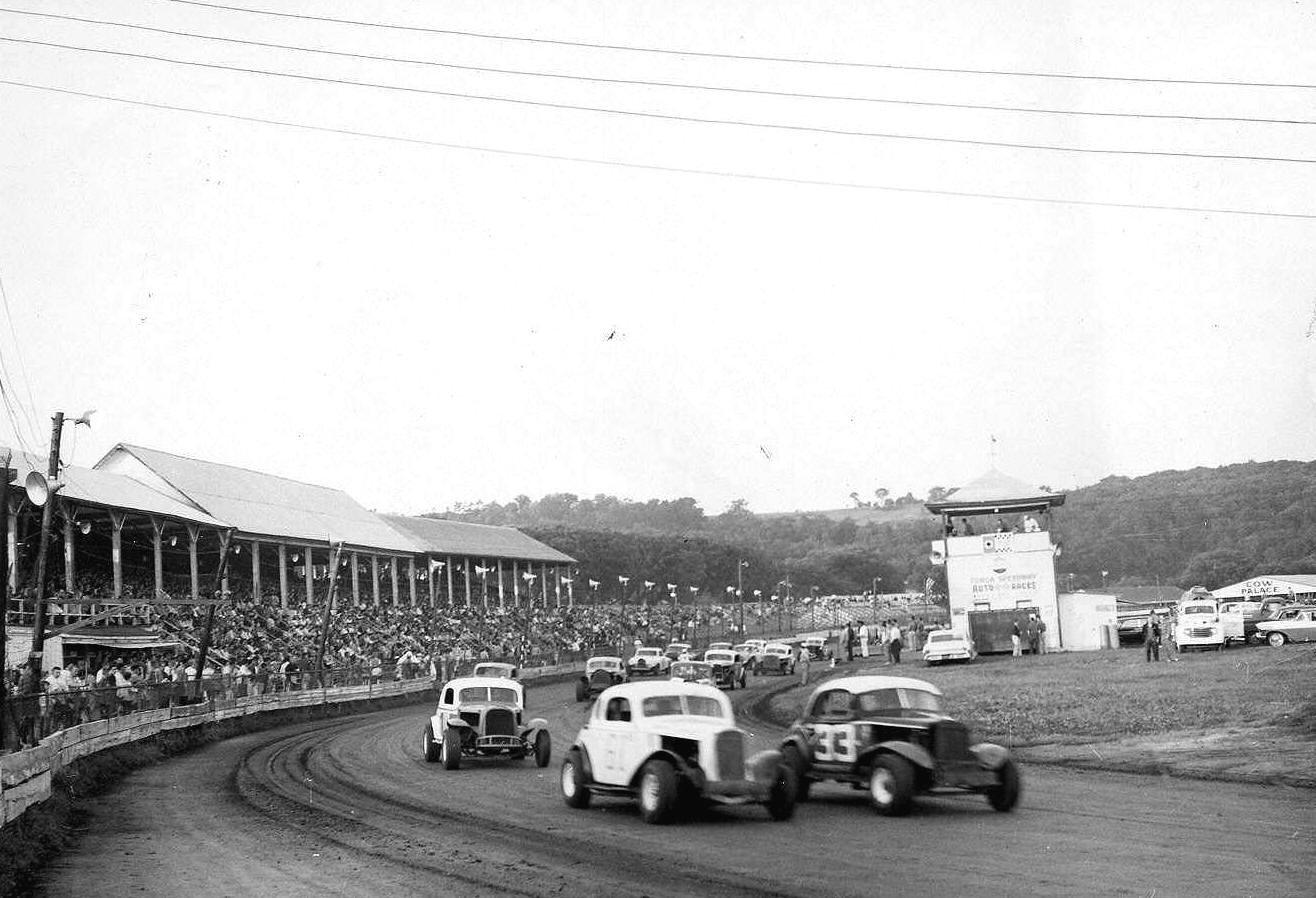
Bergh Photo via Dave Dykes
Fonda may have not been dethroned for
years had it not left on its own in 1969. With names like Wimble, Narducci, and
Lazzaro available,
it had a great chance. Oddly, Steve Danish [61 here] was largely out of the
scene by the time the League came. The highly – conservative
Danish may not have chose to join anyway.
One thing is for
sure in the dirt versus pavement argument: pavement teams are used to having
almost limitless time to practice and dial in their cars. True, some of that is
the all – important “cycling in” in of new tires; but, in the late 1960’s I
don’t know if that was as much of a factor. It must have been disconcerting to
go to a dirt track and be given something like ten laps total practice to
prepare for a League race against the best dirt had to offer.
Arguably, Frankie
Schneider may have the most impressive finish average at 8+. This is sixth best
out of the hundreds of drivers who participated over the years. And, with the
way I calculated his average, the fact that Frankie was not in the League at all
for the last four years significantly affected his average. If one considers
just his three years, he’d be at least fourth overall. Only Nazareth, for whom
Schneider drove, supplied two drivers in the final top six of all - time points
finish averages – himself and Will Cagle.
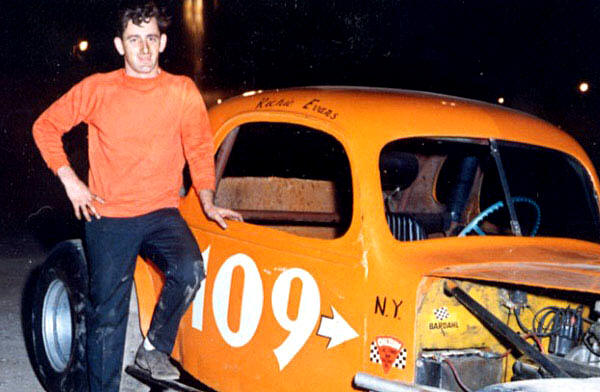
Courtesy of Otto Graham
As the League got into its
final years, the asphalt drivers like the exceptional Richie Evans seemed to
have the edge.
Old School drivers like Ernie Gahan [below] and Frankie Schneider fell out.
That top six included the fact that an 11th
place was charged to them if they did not appear in the top ten on any given
year. Reutimann’s average was 41.4. Lazzaro’s 5.17 was next, with Narducci third
at 5.71. Jerry Cook, who like Lazzaro missed 1967, was fourth with an average of
6.29 with Cagle averaging 6.71. Charland was 5th
at 7.57 and Schneider was 8.86. Most of these drivers were very effective in
most of the season in which they participated in the League.
My other final
thought has to go with Fonda Speedway. It won the first two years of the All
Star League handily – with two almost – entirely – different teams. After Ernie
Gahan and Bill Wimble seemed to distance themselves from the League after the
’67 season, the extremely versatile Lazzaro and Cook took their places with Ron
Narducci. Arguably, the only thing that broke Fonda’s domination was the fact it
dropped out in 1969 for whatever reason. When the team re-appeared, it still had
Lazzaro, but the complementary driver was never as strong as the Fonda team
members of the first two years [and he League no longer had three members on a
team].
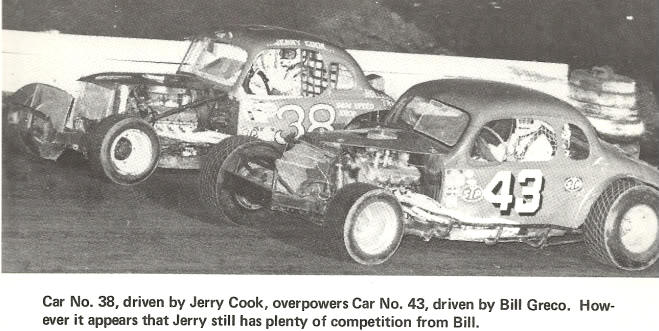
Source Unknown
Jerry Cook, who started as a driver
on both surfaces, passes Billy Greco, a pavement specialist. Don Wayman, a one –
year
Fonda team driver who was good on both surfaces, dices with Bob Malzahn, a
dirt specialist.
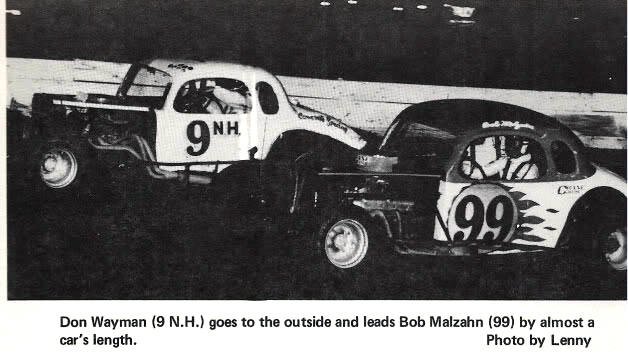
Photo by Lenny
Decisions on which
driver or which team was best in the All Star Stock Car Racing League will
likely never be settled. You can skew data and arguments too many different
ways. But one thing is sure – there may never be anything that exciting again in
Northeast stock car racing. [Too bad an economy, too much parity and homogenized
divisions, and the fact that the sport is more of a big dollar derby now among a
few huge budget teams].
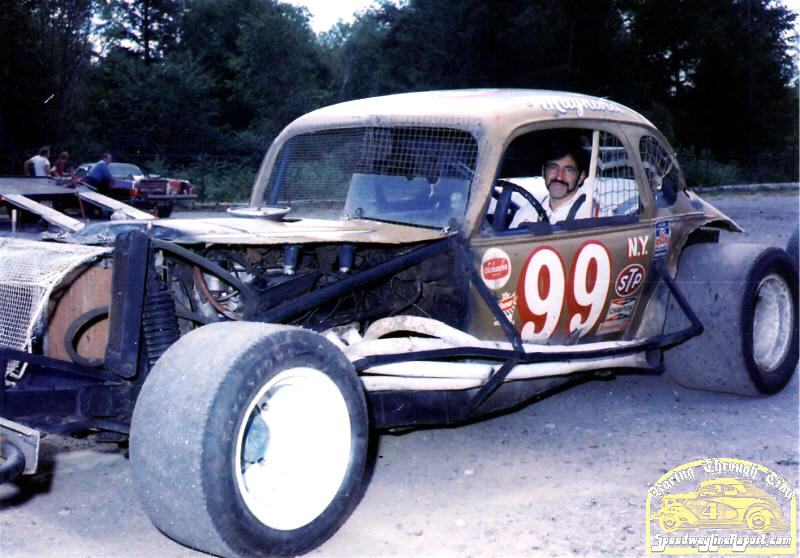
Courtesy of Dave Dykes
Ol’ Cyclone Forrette spent a season
or two in the League. A vast majority of the guys didn’t race for the entire
lifetime of the League.
Please email me if you have
any photos to lend me or information and corrections I could benefit from.
Please do not submit anything you are not willing to allow me to use on my
website - and thanks. Email is:
wladabou@comcast.net . For those who still don’t like computers - my
regular address is: Bill Ladabouche, 23 York Street, Swanton, Vermont 05488.
AS ALWAYS, DON’T FORGET TO CHECK OUT MY WEBSITE
www.catamountstadium.com
Return to the Main Page
Return to the Main News Page
Return to the All Links Page
Return to the Weekly Blog Links Page










